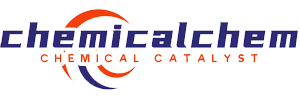Flame retardant nylon It is one of the many modified varieties of nylon. It can be used in automobile ignition system components, solar photovoltaic cell components, household appliance plugs and sockets, electrical circuit breakers, etc. The flame retardant grade of nylon before modification is around UL94V-2. By adding flame retardants to nylon for modification, the flame retardant grade after modification can reach UL94V-0. The processing temperature of nylon is relatively high. For example, the melting temperature of PA6 is 230-280°C, and reinforced PA6 is higher, 250-280°C. This requires the use of flame retardants with relatively good thermal stability. For example, iodine-based flame retardants with relatively small C-I bond energy cannot be used if they have poor thermal stability. At present, flame retardant nylon is more commonly usedBrominated flame retardants, phosphorus flame retardants and melamine salts. Brominated flame retardants are a type of halogen flame retardant. The most widely used brominated flame retardant is decabromodiphenyl ether.
It is often used in combination with antimony compounds. The HBr released by decabromodiphenyl ether reacts with Sb2O3 SbOBr, and SbOBr releases Sb2O3 when heated, of which SbBr3 is the main contributor to the flame retardant effect. The entire process is flame retardant through the mechanism of heat absorption and gas dilution flame retardancy.

Halogen-free is now advocated because halogenated flame retardants Environmental issues arise when flame retardant. However, whether decabromodiphenyl ether is harmful or not is controversial internationally. In 2005, the European Union said that it was harmless. In 2008, the Court of Justice of the European Community jumped out and said, no, the EU’s statement does not count, this is harmful. of. Eventually the use of decabromodiphenyl ether was restricted. In any case, halogen-free flame retardant nylon is definitely the best choice in the future. The main halogen-free options are phosphorus-based flame retardants and melamine salts. my country is the world’s largest phosphorus resource country, so red phosphorus has a great cost advantage and its flame retardant efficiency is high, which makes it widely used.
Red phosphorus forms phosphoric acid after thermal decomposition. On the one hand, phosphoric acid acts as a dehydrating agent and promotes carbonization. The formation of char reduces the heat conduction from the flame to the condensed phase; on the other hand, phosphoric acid can absorb heat because it prevents the oxidation of CO to CO2 and reduces the heating process. It is flame retardant through endothermic and condensed phase flame retardant mechanisms. However, in 2010, the Panasonic recall incident caused people to worry about the use of red phosphorus as a flame retardant. The reason is that red phosphorus will cause certain potential safety hazards in product performance.
On the other hand, the color of red phosphorus also limits it to dark nylons such as black or red In products, melamine salts are generally used in light-colored or transparent halogen-free flame-retardant nylon. Melamine salts mainly include melamine cyanurate (MCA), melamine polyphosphate (MPP), etc., which have the advantages of low toxicity, low corrosivity, high flame retardant efficiency, and no conflict with additives. They can be used alone. PA reaches UL94V-0 level. After the melamine salts are decomposed by heat, they will take away part of the heat and reduce the surface temperature of PA. From a gas phase perspective, decomposition can easily release non-combustible gases such as ammonia, nitrogen, nitrogen oxides, and water vapor, diluting the concentration of flammable and combustion-supporting gases and hindering further combustion inside PA.
From the perspective of condensed phase, the PA material degrades in advance and promotes carbon residue It is generated and plays a role in protecting the interior of the matrix. When using these flame retardants, for the purpose of reducing costs and maximizing the flame retardant effect, people will Compounding is based on some synergistic effects. For example, the combination of halogen-based flame retardants with gas-phase flame retardant effects and phosphorus-based flame retardants with solid-phase flame retardant effects can form a complete gas-solid phase flame retardant system; nitrogen-based flame retardants can Promote the carbonization of phosphorus compounds, etc. All in all, there is no absolutely perfect flame retardant for flame retardant nylon, which requires specific analysis of the specific situation. Under the general trend of environmental protection, halogen-free, economical and efficient compounding is the future development direction.

 微信扫一扫打赏
微信扫一扫打赏

